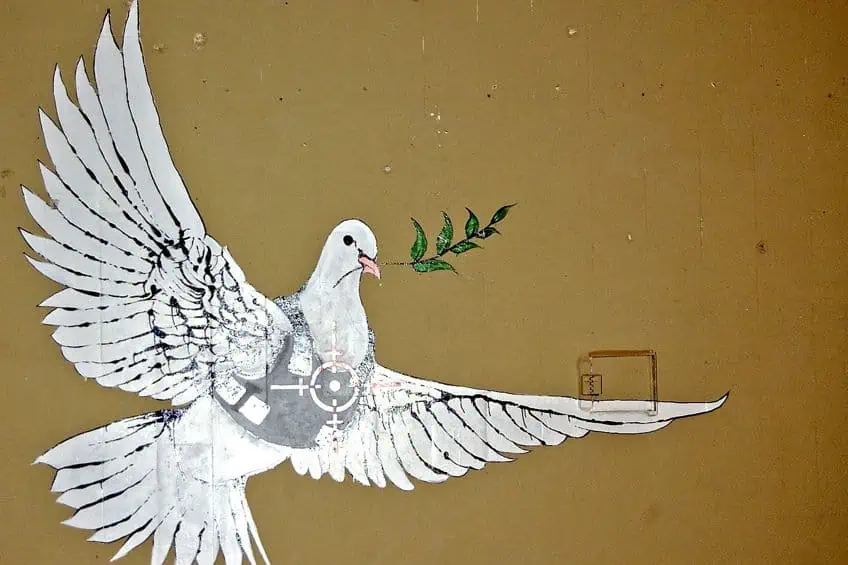Famous Street Artists – Influential Urban Artists of the Day
From Dondi White to Banksy, the dynamic world of street art has much to offer when it comes to blurring the lines between performance, public art, audience engagement, and the negation of the art institution. The independent or collective role of the artist is informed by the collaboration between urban architecture, the public who occupy the space, and the creative expressions that evoke discussions around the importance of public art. In this article, we will introduce you to some of the best Modern and Contemporary urban artists, whose works have captured the public eye and provided some of the best graffiti and street artworks in the world.
The World of Contemporary Street Art
What is street art? When did street art emerge? Who are the most famous street artists today? And what is the significance of street art in the 21st century? These are just a few questions you may have on your mind when it comes to the world of street art, which is often associated with world-renowned names such as Banksy and Jean-Michel Basquiat. Street art is commonly understood as any artistic intervention or artwork made for the public eye and is closely connected with other sub-genres such as graffiti art, guerilla art, post-graffiti, and independent art.
The façade of street art may seem simple, yet many tend to underestimate the impact of public art that not only heightens visibility but leverages it to relay messages that relate to the environment, people, and context in which it exists.
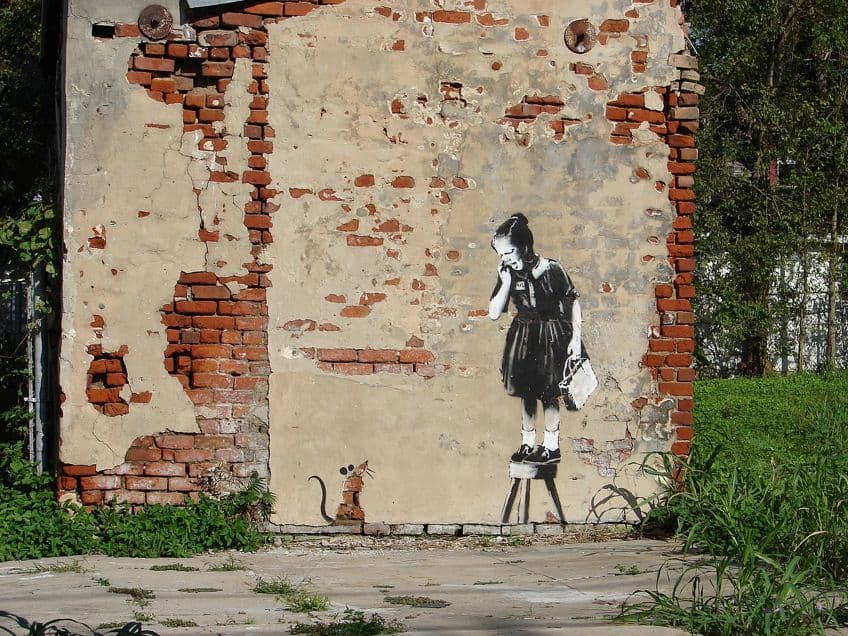
The boom of street art began in the mid-20th century in Philadelphia and then traveled to New York City’s Washington Heights area where a few street artists combined their names with the streets they were associated with. Although Manhattan is the most popular site for the emergence of street art, it is important Some of the most famous street artists originated in New York and include the likes of Friendly Freddy from Brooklyn and Lee 163 from the Bronx. One of the first elements of street art was text and typography, which soon evolved with the addition of stylistic and ornamental elements and shapes.
The original medium for street art is commonly thought to be spray paint, however, street art can encompass other media such as wheat pasting, reverse graffiti, LED art, stencil art, rock balancing, wood blocking, and even mosaic tiling.
The Significance of Street Art
The function of street art is inherently tied to the category of public art since street art is created in visible areas, often open to the public view. In other cases, street art can also be found in hidden locations within urban environments to draw attention to the site or the artist. Street art can also convey social or political messages to provoke the public and stir discussions about relevant news. In a way, street art has also been utilized as a form of activism and a tool for spreading awareness about certain societal issues. There is also an important factor to distinguish street art and graffiti art, as most terms are often used interchangeably in the public eye and inner arts sector.
Graffiti art was a movement that predated street art and street art can be understood as a development of graffiti art or an extension of it. Graffiti art also originated via text, tags, and lettering while street art developed to encompass more imagery and space.
The significance of street art is therefore crucial to relaying public messages and prompts since it begs to be seen and acknowledged. Street art is incredibly powerful as a visual prompt since its placement can generate a reach and thus be “seen”. Through street art, the artist is also “seen” and helps connect the general public to the visual arts. This is another factor worth noting in street art since it almost entirely negates the function of the art institution unless it appears on its exterior or street. Street art is also out of the grasp of the private collector who cannot bid for street-based artwork if it is site specific.
The Legalities of Graffiti Art
Street artists are sometimes categorized as urban artists who are seen in an independent light meaning that the involvement of an art institution such as a gallery or museum is very much reduced. A special factor of street art is the fact that the idea and influence of the establishment are removed from the production of the art and the power of the artist unless the artwork’s position is directly related to the institution.
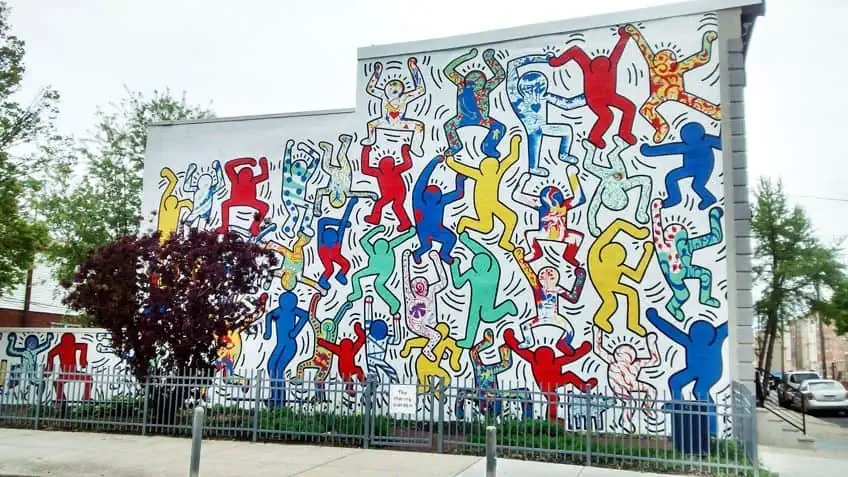
Graffiti art is sometimes tied to accusations of vandalism, which begs the role of the artist who is unprotected by any institution yet illuminates the independence of the artist and the potential for risk that artwork in public spaces carry. Graffiti is viewed as a form of theft if the artist has not obtained permission from the relevant parties. Another intriguing aspect about graffiti art and the legalities surrounding it is that it can increase the value of a building if the building is “run-down”, and if it were created by a famous artist, however, the graffiti would still be viewed as illegal.
The Top 10 Most Famous Contemporary Street Artists
Public art can also be performative, and as such, can be used as a tool for exhibiting and attracting attention to street art. Below, we will take a look at some of the world’s best street artists and how these artists have piloted the genre to new levels.
Cornbread (1953 – Present)
| Name | Darryl McCray |
| Date of Birth | 1953 |
| Date of Death | Present |
| Nationality | American |
| Associated Movements, Themes, and Styles | Street art, Graffiti writing, and Contemporary art |
| Medium | Graffiti |
| Famous Artworks | ● Cornbread and Friends (1967) |
Cornbread is celebrated as one of the 20th century’s first graffiti artists who pioneered the field of street art in Philadelphia. Cornbread was first recognized in the 1960s after tagging his name with a group of friends at different sites across the city. The movement of street art and graffiti is partially attributed to artists like Cornbread who helped spread the movement to New York City, where its popularity spiked. Cornbread is acknowledged as the first graffiti writer who follows the idea of selecting a name and pasting it wherever one can. Today, graffiti artists around the world are thankful for the free-thinking movers and shakers of the past.
Tracy 168 (1958 – Present)
| Name | Michael Tracy |
| Date of Birth | 1958 |
| Date of Death | Present |
| Nationality | American |
| Associated Movements, Themes, and Styles | Wild Style, Contemporary art, Modern art, graffiti, lettering, and Street art |
| Medium | Graffiti |
| Famous Artworks | ● Piece (1973) ● Cliff Tribute (2001) ● Tracy (2001) ● Wanted (2002) |
Tracy 168 is among the best of the best in the American graffiti art scene and championed a street art style called the Wild Style. Crucial to the development of street art, Tracy’s Wild Style is described as a complex form of graffiti, which is visually interpreted by the overlapping lettering and addition of decorative motifs and symbols that make reading and understanding the work somewhat of a challenge to individuals who are unfamiliar with the style. Tracy’s style is incredibly difficult to produce and has been practiced by other Contemporary street artists such as RIME and CHEZ. Tracy was originally part of a street group known as the Wild Style crew boasting more than 500 members.
The Wild Style remains one of the most iconic lettering techniques of graffiti art to date.
Keith Haring (1958 – 1990)
| Name | Keith Allen Haring |
| Date of Birth | 1958 |
| Date of Death | 1990 |
| Nationality | American |
| Associated Movements, Themes, and Styles | Pop art, Street art, Contemporary art, and Neo-Expressionism |
| Medium | Graffiti |
| Famous Artworks | ● Crack is Wack (1986) ● Ignorance = Fear (1989) ● Radiant Baby (1990) |
Pivotal to the graffiti subculture of the late 20th century, popular Pop art and Neo-Expressionist icon Keith Haring was one of the best Modern graffiti artists of all time. Haring’s approach to graffiti art evolved into a visual language of its own and promoted social awareness for AIDS and safe sex. His graffiti drawings developed from subway artworks featuring chalky outlines and stylized designs to large-scale murals and street art. Between 1982 and 1989, Haring created more than 50 street artworks, which tackled issues around anti-apartheid, homosexuality, drugs, and social politics. In 2019, Haring was recognized as one of the top 50 American heroes on the National LGBTQ Wall of Honor at Stonewall Inn in New York City.
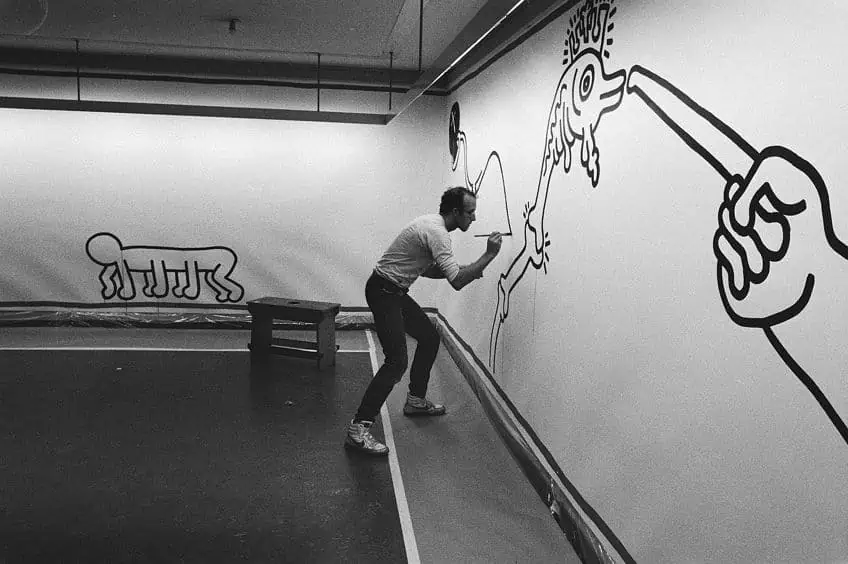
Jean-Michel Basquiat (1960 – 1988)
| Name | Jean-Michel Basquiat |
| Date of Birth | 22 December 1960 |
| Date of Death | 12 August 1988 |
| Nationality | American |
| Associated Movements, Themes, and Styles | Neo-Expressionism, Street art, Modern art, social commentary, political art, epigrams, class conflict, power struggles, community, and race |
| Medium | Graffiti, painting, and drawing |
| Famous Artworks | ● Irony of Negro Policeman (1981) ● Untitled (1982) ● Boy and Dog in a Johnnypump (1982) ● Defacement (1983) ● Hollywood Africans (1983) |
Jean-Michel Basquiat was one of the most influential Modern street artists of the 20th century who was also a pioneer in Neo-expressionism of the late 1980s. Basquiat operated under the graffiti duo called SAMO producing impactful epigrams in the lower East side of Manhattan. The east side culture played a huge role in informing Basquiat’s art and by age 21, the young artist was already participating in overseas exhibitions and was the youngest artist to exhibit at the New York Whitney Biennial. His work dealt with important social and cultural experiences, including the dichotomy of the wealthy in contrast to the poor and the appropriation of poetry and images in conversation with history and abstraction to produce critical artworks.
Basquiat used street art as a medium through which he could enlighten the public on social issues and draw attention to issues that people of mixed race faced in the community and the struggle against racial injustice in the system.
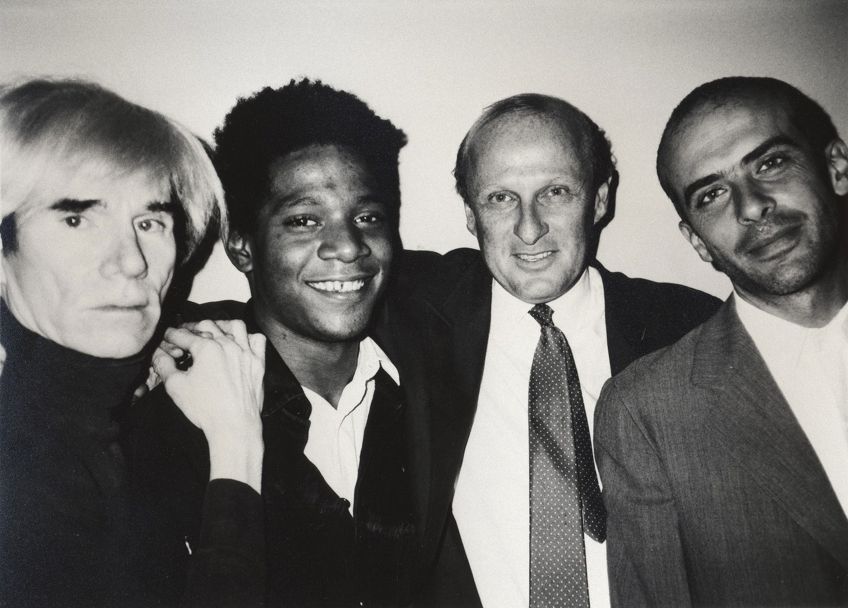
Dondi White (1961 – 1998)
| Name | Donald Joseph White |
| Date of Birth | 7 April 1961 |
| Date of Death | 2 October 1998 |
| Nationality | American |
| Associated Movements, Themes, and Styles | Street art, graffiti art, Modern art, mural art, tagging, and Wild Style |
| Medium | Graffiti |
| Famous Artworks | ● Children of the Grave Parts 1, 2, and 3 (1978 – 1980) ● Piece on an R22 Subway Train, New York (1979) ● DONDI WHITE (1986) |
East New York legend Dondi White, also identified by his birth name Donald Joseph White, was one of the most respected street graffiti artists of all time who began his tagging journey in the 1970s. White’s unique style pioneered a fusion of popular culture references and complex lettering techniques and was collected by several art institutions. White was also the first graffiti artist to exhibit his work in Europe and was a pivotal figure in the expansion of the movement.
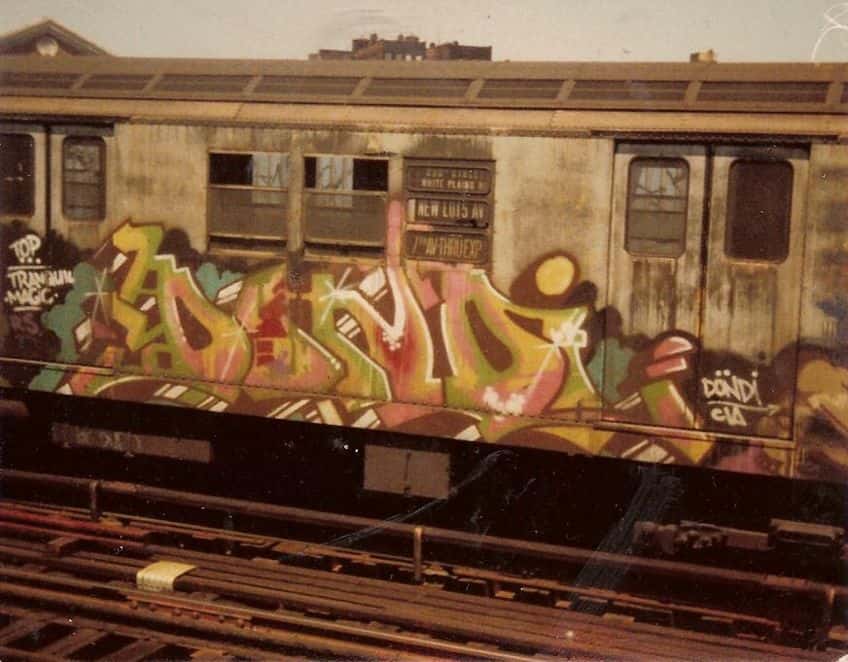
Seen UA (1961 – Present)
| Name | Richard Mirando |
| Date of Birth | 18 October 1961 |
| Date of Death | Present |
| Nationality | American |
| Associated Movements, Themes, and Styles | Modern art, Street art, popular culture, and Contemporary art |
| Medium | Graffiti, drawing, and painting |
| Famous Artworks | ● Superman Piece, New York (1980) ● Big Walls; Cope2, Nosm, and How (2009) ● Multi Tags (2015) |
American graffiti artist Seen UA is one the best street artists of the century and is nicknamed “the godfather of graffiti”. Also known as Richie, the graffiti artist began his venture into street art in the 70s in the New York subway along with his crew called the UA (United Artists). Throughout the next decade, Seen left a multitude of dynamic graphics across subway routes around the city and by the 80s, he transitioned to produce works on canvas, which are currently housed in many private collections around the world. Seen has also participated in group exhibitions with other famous Modern artists, including Andy Warhol and Keith Haring.
Seen took his creative practice to the next level by opening up his own tattoo parlor in the 80s, which has become one of the most successful tattoo studios in New York.
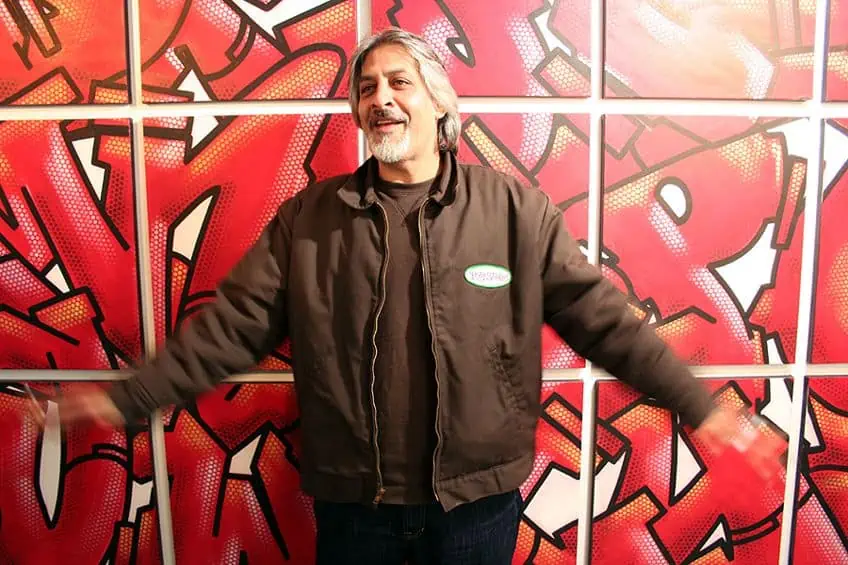
Daze (1962 – Present)
| Name | Chris Ellis |
| Date of Birth | 1962 |
| Date of Death | Present |
| Nationality | American |
| Associated Movements, Themes, and Styles | Street art, Modern, and Contemporary art |
| Medium | Graffiti |
| Famous Artworks | ● The City (1983) ● Pursuit V (1985) ● On the D. L. (1996) |
Chris Ellis, better known as Daze, is one of the world’s leading street graffiti artists whose early teenage attempts in the 70s led to his later success in the art world. Daze is recognized for his work in the alternative art scene in New York and currently operates within the circles of commissions and exhibitions within various art institutions around the world.
Lady Pink (1964 – Present)
| Name | Sandra Fabara |
| Date of Birth | 1964 |
| Date of Death | Present |
| Nationality | Ecuadorian-American |
| Associated Movements, Themes, and Styles | Female empowerment, and self-expression |
| Medium | Painting, graffiti, and murals |
| Famous Artworks | ● Green Woman (1995) ● Flower (1997) ● Pink Piece (1997) ● Brick Woman (2000) ● Close Up; Wellington Court Project (2010) ● N10 Wall (2011) |
Sandra Fabara, also known by her street artist name Lady Pink, is one of the most famous street graffiti artists in the world whose introduction to the world of graffiti art began in the late 1970s after the death of her boyfriend. Lady Pink tagged her boyfriend’s name around the city of New York and has since used her graffiti art as an extension of her inner world and a reflection of her self-expression. Lady Pink is also known as the first lady of graffiti for being one of the first women in street art, active during the 1980s. She is also the founder of a women’s street art collective known as the Ladies of the Arts and is also affiliated with the TPA and TC5, who are other major graffiti crews.
Lady Pink’s studio art also deals with pop-Surrealist scenes of the city with many of her works housed in the collections of prominent institutions such as the Metropolitan Museum of Art and the Whitney Museum of American Art.
Banksy (1974 – Present)
| Name | Banksy |
| Date of Birth | 28 July 1974 |
| Date of Death | Present |
| Nationality | British |
| Associated Movements, Themes, and Styles | Popular culture, social, and political commentary |
| Medium | Street art, stencil art, printmaking, and filmmaking |
| Famous Artworks | ● The Mild Mild West (1999) ● Balloon Girl (2002) ● Flying Balloon Girl (2005) ● Well Hung Lover (2006) ● Gorilla in a Pink Mask (2011) |
Banksy is one of the world’s most famous street artists whose identity remains anonymous due to the artist’s initial entry into the underground art scene through graffiti, which was illegal, and thus his art was born out of rebellion. Banksy’s street artwork has captivated many across the globe, including many art sleuths who continue to generate theories about the artist’s true identity. From what is known about the artist, Banksy’s art was inspired by a graffiti artist called 3D and the lead singer of Massive Attack.
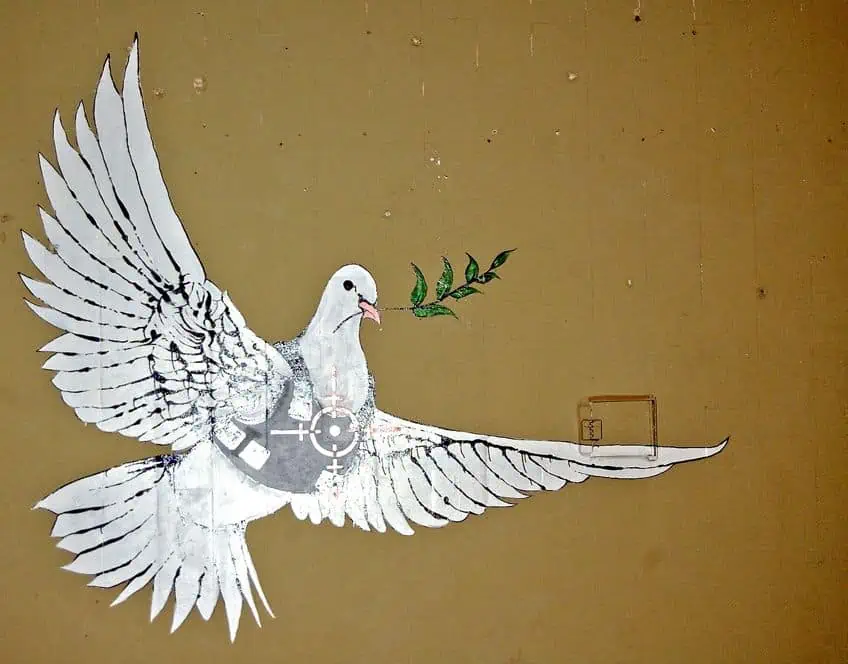
In 2003, Banksy was described as a cross between English rapper Mike Skinner and singer-songwriter James Nail. Banksy began public interventions in the early 1990s with freehand graffiti art as part of the DryBreadZ Crew and acquired an agent to sell his work. Banksy picked up stenciling in the early 2000s after hiding from the police and arriving at the conclusion that the stencil art process was more efficient and thus, the Banksy stencil art was born. Banksy’s works can be described as anti-war, anti-establishment, and “anti” towards social, political, and environmental issues that affected the public negatively.
Kidult (Present)
| Name | Unknown |
| Date of Birth | Unknown |
| Date of Death | Present |
| Nationality | French |
| Associated Movements, Themes, and Styles | Political art, Guerilla, social commentary, corruption, greed, satire, and Street art |
| Medium | Graffiti |
| Famous Artworks | ● Kidult (2011) ● ART (2012) ● 686 (2013) ● Real Slaves (2016) ● Merry Crisis (2019) |
Vandalism or art? Kidult is one of the world’s most famous street artists whose identity remains a mystery due to the nature of the artist’s work in an anti-establishment, anti-capitalist approach. All street artists select their favorite sites, which act as large-scale canvases. Kidult’s canvas happens to specifically target the storefronts of major luxury brands, often with text addressing the brands’ recent attention in the media, which tends to be more negative and thus an immediate jab at these brands’ shortfalls. Despite the graffiti artist’s works being labeled as “attacks” and acts of vandalism against company property, the artist has been operating for more than five years with the artist receiving attention from fashion brands under Kanye West, Balenciaga, and Agnés b among many others.
Kidult also draws attention to important notions around the commercialization practiced by many brands and “governing institutions”, which the artist leverages to dismantle the system of capitalization. Kidult’s manifesto further states that his art was “never about beauty or aesthetics” and that his goal was directed at efficiency through his process of execution, which involved selecting “the right spot at the right time, making as much damage as possible, and shocking people”.
The incredible world of street art offers much to introspect on when it comes to re-evaluating the multifaceted dynamics that occur between street artists and the shift to the commercial gallery space. Not all graffiti artists choose to pursue the commercial gallery environment, which truly highlights the alternative “independent” route that many artists have leveraged to define the global street art movement.
Take a look at our street artists webstory here!
Frequently Asked Questions
What Is Street Art?
Street art refers to a global Modern art movement defined by artworks which are created in public locations and possess a high level of visibility. Street art is also understood as graffiti art, neo-graffiti art, independent art, guerilla art, and post-graffiti art. There are different types of street art, which can encompass performance, video projection, stencil art, and wheat pasting methods, among many other mediums to produce street art.
Who Is the Most Famous Street Artist?
The most famous street artist is considered to be Banksy, who has been producing Modern graffiti and stencil artworks anonymously for over two decades. Banksy is known as a graffiti artist and is well-known for his 2002 graffiti artwork, The Little Girl With a Balloon, which was executed in London.
Where Did Modern Street Art Begin?
According to documented records, Modern street art began in Philadelphia and spread to New York City in the 1960s, which coincided with the financial bankruptcy of the city, leaving many sites across the urban environment abandoned, shut down, or closed. This provided the opportunity for underground street, guerilla, and graffiti art factions to form and first debuted as subway art, tags, the Wild Style, and graffiti writing.
Jordan Anthony is a Cape Town-based film photographer, curator, and arts writer. She holds a Bachelor of Art in Fine Arts from the University of the Witwatersrand, Johannesburg, where she explored themes like healing, identity, dreams, and intuitive creation in her Contemporary art practice. Jordan has collaborated with various local art institutions, including the KZNSA Gallery in Durban, the Turbine Art Fair, and the Wits Art Museum. Her photography focuses on abstract color manipulations, portraiture, candid shots, and urban landscapes. She’s intrigued by philosophy, memory, and esotericism, drawing inspiration from Surrealism, Fluxus, and ancient civilizations, as well as childhood influences and found objects. Jordan is working for artfilemagazine since 2022 and writes blog posts about art history and photography.
Learn more about Jordan Anthony and about us.
Cite this Article
Jordan, Anthony, “Famous Street Artists – Influential Urban Artists of the Day.” artfilemagazine – Your Online Art Source. March 23, 2023. URL: https://artfilemagazine.com/famous-street-artists/
Anthony, J. (2023, 23 March). Famous Street Artists – Influential Urban Artists of the Day. artfilemagazine – Your Online Art Source. https://artfilemagazine.com/famous-street-artists/
Anthony, Jordan. “Famous Street Artists – Influential Urban Artists of the Day.” artfilemagazine – Your Online Art Source, March 23, 2023. https://artfilemagazine.com/famous-street-artists/.


